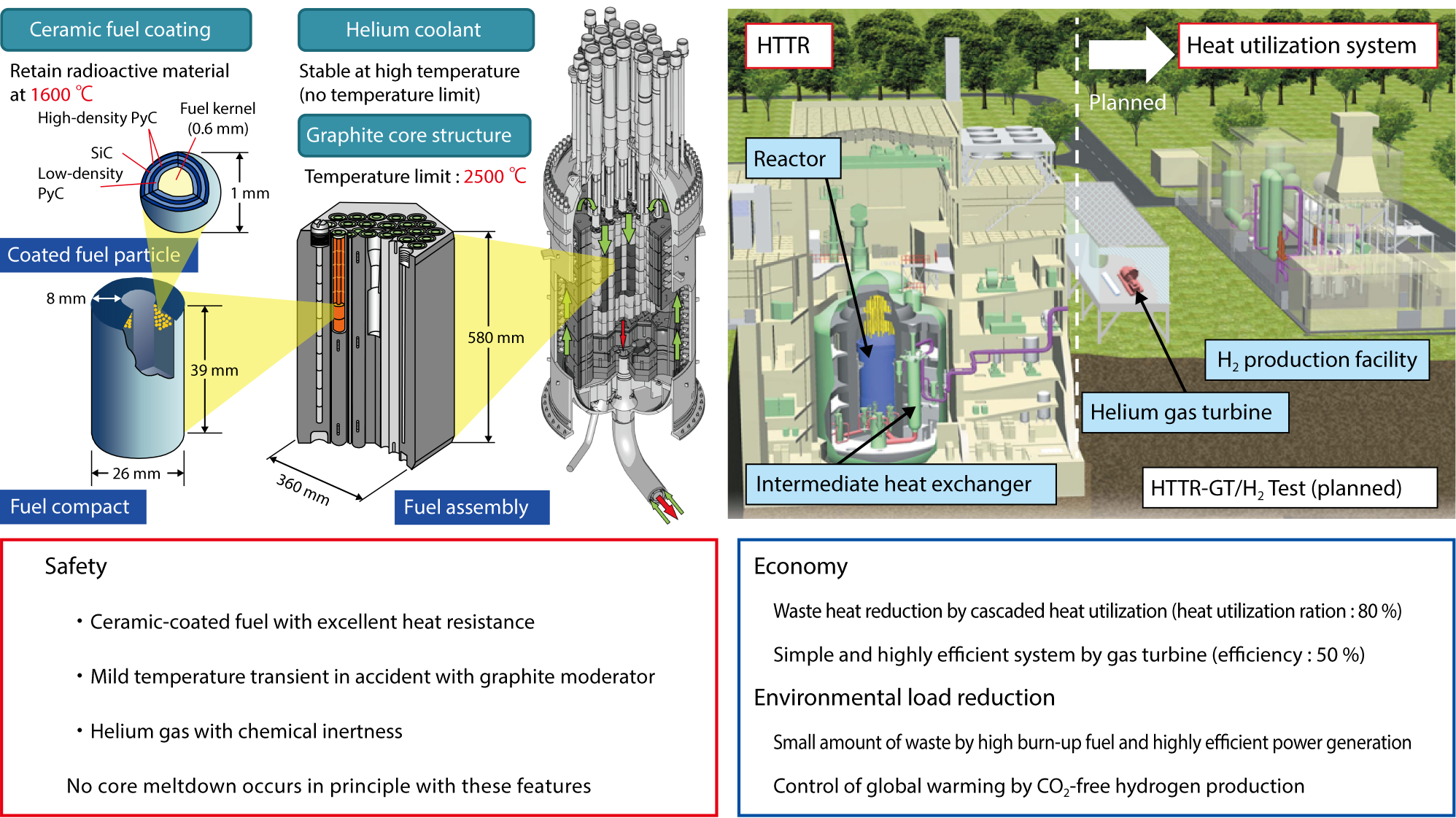
Fig.6-1 Features of HTGR
Japan’s energy–supply–demand structure is fragile because of its excessive dependence on imported fossil-fuel resources. To remedy this situation while simultaneously reducing the greenhouse-gas emissions that cause global warming, Japan is advancing the use of safe nuclear energy. The High Temperature Gas-cooled Reactor (HTGR) is a nuclear reactor with various industrial uses, such as high efficiency power generation by a helium gas turbine, hydrogen production, and seawater desalination (Fig.6-1). “Chapter 3. Promotion of technology development, 2. Technical challenges to be addressed” of the 5th Energy Basic Plan, which was decided by the Cabinet in July 2018, mentions that “Under international cooperation while looking at overseas market trends, GOJ also facilitates R&D of nuclear technologies that serves the safety improvement of nuclear use, such as HTGRs which are expected to be utilized in various industries including hydrogen production and which has an inherent safety”.
The industry, academic body and government council established by the Ministry of Education, Calture, Sports, Science and Technology (MEXT) is developing strategies for commercializing HTGRs and deploying Japanese HTGR technologies overseas. Last year, a cooperation policy and domestic organization structure was established for an experimental and commercial reactor in Poland. We aim to maintain the most advanced HTGR technology in the world, cultivated through the design, safety review, construction, operation, maintenance, and safety evaluation of Japan’s first HTGR in Oarai Town. These operations will follow Japan’s new regulation standards for the High Temperature engineering Test Reactor (HTTR). The plant will be constructed by overseas projects and returned to our country in future.
The HTTR, constructed using domestic technology, is the only HTGR worldwide that can extract 950 ℃ heat from the reactor. The HTTR attained a reactor outlet temperature of 950 ℃ in 2004 and continuously operated at that reactor outlet temperature for 50 days in 2010. The inherent safety features of the HTGR were also confirmed in a loss-of-forced-cooling test in 2010, without inserting the control rod. In these tests, the reactor intrinsically shut down and maintained a stable state.
Currently, JAEA is conducting an accident progression analysis of the HTGR during extreme seismic events, studying the reduction of radioactive waste using the HTGR characteristics, testing the ZrC coating for oxygen sequestering, developing a passive-radiative cooling facility for the HTGR, and improving the neutron-startup source exchange work of HTGR (Topics 6-1, 6-2, 6-3, 6-4, 6-5). The heat from the HTGR has been utilized in iodine, sulfur and hydrogen production by a thermochemical water-splitting process (Topic 6-6). Finally, an HI decomposition membrane reactor that improves the hydrogen production efficiency has been developed, and its applicability has been evaluated on industrial materials (Topic 6-7).
Owing to the inherent safety features of HTGR, the HTTR is expected to restart its operation without confirming compliance with the new regulation standards, and without large-scale modification or reinforcement. We are now steadily making the final preparations before restarting the HTTR operation.